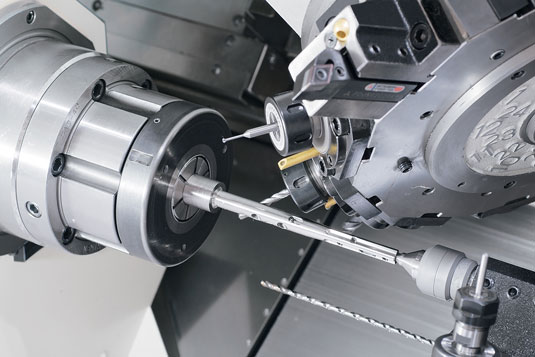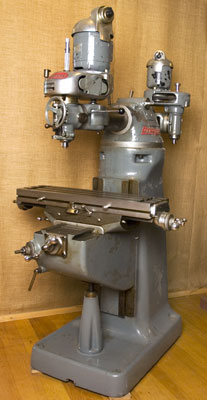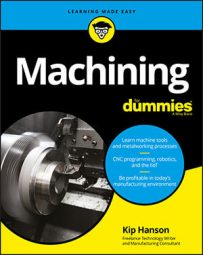As with most technologies, machine builders have stood on the shoulders of those who went before them, continually improving their wares while making others obsolete, and generally driving the industry in a forward direction. Take a walk through any used machinery warehouse and read the nameplates attached to the equipment there: You'll see names such as Landis, LeBlond, Ingersoll, Davenport, Bullard, Bliss, Swasey, and others — people who left behind lasting machine tool legacies and collectively brought us to where we are today. In no particular order, here are a few of their stories:
- Screwing around: The man most often credited with inventing the first true screw-cutting lathe was British mechanical engineer Henry Maudslay, who patented his invention in or around 1799 (see the following figure). However, American David Wilkinson designed a similar device five years earlier, as did fellow Englishman and instrument maker Jesse Ramsden in 1775. Whatever the case, Maudslay's device is remembered for its "perfect screws," and therefore, paved the way for one of the most important of all mechanical components: accurate and reusable threaded fasteners.
 Courtesy: Nakamura-Tome
Courtesy: Nakamura-Tome Despite its advanced features, Henry Maudslay would recognize this modern lathe as a direct descendant of his now two-centuries-old invention.
- Connecticut cut-ups: Most machine tool builders name their inventions after themselves. Not so with Rudolph Bannow. In 1936, he and business partner Magnus Wahlstrom invented perhaps the most well-known of all machine tools, the Bridgeport knee mill (see the following image). Walk into any machine shop or manufacturing toolroom and you're sure to find at least one Bridgeport there; often it was the first piece of equipment the shop owner purchased. So where did the name come from? The factory where Bannow and Wahlstrom first began building their machines was in Bridgeport, Connecticut. Sadly, it was demolished in 2010.
 Courtesy: American Precision Museum; photo credit to Ezra Distler
Courtesy: American Precision Museum; photo credit to Ezra Distler Tens of thousands of Bridgeport knee mills and nearly identical clones have been produced over the past 80 years. This one in the American Precision Museum collection is Serial Number 1.
- From Chicago to New York: Ask any veteran machinist to name her favorite toolroom lathe or collet chuck (a workholding device) and you're likely hear "Hardinge." Beginning in 1890, Hardinge brothers Franklin and Henry began building watchmaking equipment and small foot-powered lathes in Chicago. Twelve years later, the two purchased a line of bench lathes from Cataract Tool and Optical Co., and at some point in the company history, registered the trademark SUPER-PRECISION, a term that still stands today.
- Ginning up the truth: American inventor Eli Whitney is often acknowledged as the inventor of the milling machine, although it's clear there were others working on it at the same time. Many historians credit gun-maker Robert Johnson of Connecticut with its development, yet machine tool innovators Robbins and Lawrence almost certainly played a hand as well. The earliest milling machines were basically modified lathes, one where an end mill (a type of cutting tool) was placed in the machine spindle and the workpiece mounted to the lathe's cross slide.
In 1818, Thomas Blanchard gave us the copy lathe; in 1836, James Nasmyth invented the shaper. Twenty-two years after that, Ebenezer Lamson purchased the assets of the Robbins & Lawrence Company, paving the way for the establishment of one of the world's most well-known machine tool manufacturers, Jones and Lamson. Engineer George Gridley worked there for a while, then left to design his own automatic screw machine — the now equally famous Acme-Gridley brand.
Starting around 1850, Joseph Brown and Lucian Sharpe combined their last names to begin a company that would develop a wide array of machine tools and tooling, including cam-driven automatic screw machines, turret lathes, and inspection tools — think of them the next time you pick up vernier calipers to measure a part. Brown and Sharpe also invented the universal milling machine, which added a third axis to the heretofore two-axis mills.
William Davenport worked there for 12 years (and likely designed the company's first screw machine) before leaving to start his own company. He then developed a five-spindle screw machine that he of course named after himself — visit most any screw machine house and you might see one of his drab gray Davenport multi-spindles still at work there.

